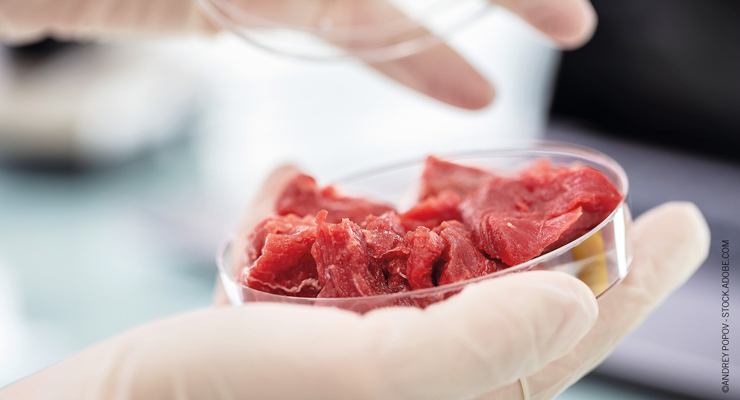Food safety is top of mind for today’s food processors and consumers, and processors of meat and poultry products need to make sure their food contains as few unwanted microorganisms as possible. Animals are rife with microbial organisms, including some very significant human pathogens—most notably Salmonella, Campylobacter, and pathogenic E. coli.
According to CDC, 1.4 million cases of foodborne illness and more than 450 deaths are attributed to Salmonella infections in the U.S. annually. Campylobacteriosis is the second-most frequently reported cause of foodborne illness, and Campylobacter jejuni is the most common strain that causes illness. CDC estimates 1.3 million campylobacteriosis illnesses each year in the U.S. When it comes to E. coli, while most strains are harmless to humans, Shiga toxin-producing E. coli (STEC) can cause severe illness. CDC estimates that 265,000 infections occur each year in the United States and, due to its ease of infection and high mortality rate, STEC is among the most feared foodborne pathogens, by processors and consumers alike.
As we increase our understanding of how pathogen contamination occurs, regulations evolve as well. For example, USDA Food Safety and Inspection Service (FSIS) implemented a revised Salmonella and Campylobacter testing program in 2016 while also replacing its Salmonella-specific sampling set approach with a routine sampling approach for all USDA FSIS-regulated products that are subject to verification testing. Salmonella and Campylobacter performance standard verification samples are now taken as part of a “moving window” sampling approach, and the results are used to determine if an establishment is meeting the performance standard on a continuous basis.
More recently, CDC announced new goals as a part of its Healthy People 2020 initiative to drastically reduce the number of foodborne illnesses caused by some of these pathogens by more than 50,000 cases—a goal that will require cooperation and reduction efforts from both consumers and processors.
Consumer advocacy groups also expect processors to shoulder a greater responsibility from a foodborne illness prevention perspective. In January 2020, a law firm filed a petition with USDA to completely ban more than two dozen strains of Salmonella entirely from meat and poultry samples; unlike STEC, Salmonella is not currently considered an adulterant. Government agencies around the world are taking similar steps to reduce pathogen contamination; however, increased regulations place a greater demand on food processors to limit pathogen exposure and contamination as much as possible, lest they suffer a costly recall.
Most foodborne illnesses caused by meat and poultry products occur when consumers ingest these pathogens on improperly handled or cooked product. Many of the most dangerous pathogens live in specific parts of the animal or originate in the farms on which they were raised, but, during slaughter operations, contamination from the farm can spread to processing facilities through bacteria on the skin and intestine. Proper sanitary operations and the use of systemic antimicrobial interventions are necessary to minimize the contamination occurring during slaughter and further processing, if the carcasses are fabricated into parts and comminuted (e.g., ground or mechanically separated non-ready to eat) products.
However, processors can go beyond basic intervention steps to ensure that products delivered to consumers are as safe as possible. Two of the best ways to do this are well-designed environmental monitoring programs and utilization of modern pathogen detection technologies.
Innovations in Poultry and Meat Testing Methods
 Testing for pathogens in meat and poultry products can be especially arduous due to the complex nature of the matrices. Detection is often assessed at the primary production level—in broiler carcass and/or in parts rinses and in raw meat. Competitive microflora in all of these types of samples can impact the growth of Salmonella required for detection in most culture-based methods. In addition, confirmation procedures become complex when associated microflora are also recovered in most selective agars. Therefore, traditional agar methods can struggle to rapidly and accurately assess the presence of Salmonella and Campylobacter in poultry products.
Testing for pathogens in meat and poultry products can be especially arduous due to the complex nature of the matrices. Detection is often assessed at the primary production level—in broiler carcass and/or in parts rinses and in raw meat. Competitive microflora in all of these types of samples can impact the growth of Salmonella required for detection in most culture-based methods. In addition, confirmation procedures become complex when associated microflora are also recovered in most selective agars. Therefore, traditional agar methods can struggle to rapidly and accurately assess the presence of Salmonella and Campylobacter in poultry products.
ACCESS THE FULL VERSION OF THIS ARTICLE
To view this article and gain unlimited access to premium content on the FQ&S website, register for your FREE account. Build your profile and create a personalized experience today! Sign up is easy!
GET STARTED
Already have an account? LOGIN

